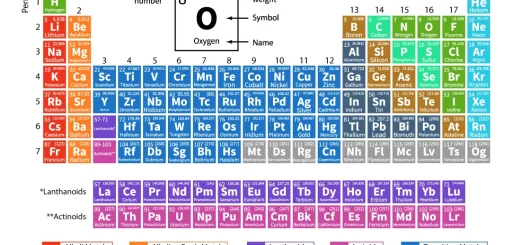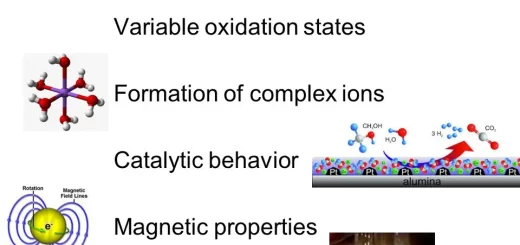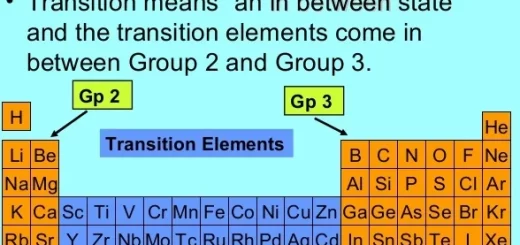Hydroxy compounds, Rules for calculating the oxidation numbers
The oxygenated acids (acids contain oxygen) and bases are considered as hydroxy compounds, They can be represented by the general formula (MOH), where M is the element atom, The hydroxy compounds can be ionized by either ways: As an acid, As a base.
Hydroxy compounds
As an acid: The compound will be ionized as an acid if: The (M − O) bond is stronger than the (O − H) bond, (The attraction force between M+ and O− − is stronger than that between H+ and O− − ).
MOH (oxygenated acid) ⇔ MO− + H+ (Hydrogen ion)
As a base: The compound will be ionized as a base if: The ( O − H ) bond is stronger than the (M − O) bond, (The attraction force between H+ and O− − is bigger than that between M+ and O− −).
MOH (base) ⇔ M+ + OH − (hydroxide ion)
If the strength of (M − O) bond and the strength of (O − H) bond are equal, the substance will be ionized as an acid or a base depending on the reaction medium, this means that it reacts as a base in the acidic medium and as an acid in the basic medium.
In general, the attraction forces between each of (O− −, M+) and (O− −, H+) depend on the volume of atom M and the charge of M in the compound.
The basic property of sodium hydroxide compound
Sodium hydroxide is ionized as a base, where the sodium atom has a big volume and its ion has only one positive charge, Accordingly the attraction between Na+ and O− − decreases, and The ( O − H ) bond is stronger than that of the ( Na − O ) bond, So, OH− ion is produced.
NaOH (sodium hydroxide) ⇔ Na+ (sodium ion) + OH − (hydroxide ion)
The hydroxy compounds of nonmetallic elements as chlorine are ionized as an acid, Because the nonmetallic elements are characterized by the small atomic volume and the big charge which increases its attraction to O− − ion and the (Cl − O) bond becomes stronger than the (O − H) bond, so, the positive hydrogen ion H+ is produced.
The strength of the oxygenated acids
The oxygenated acids are represented by the following general formula: M On ( OH ) m
Where: M is the central nonmetal atom, n is the number of nonbonded oxygen atoms with hydrogen, m is the number of bonded oxygen atoms with hydrogen.
The strength of the oxygenated acid increases as the number of nonbonded oxygen atoms (On) with hydrogen increases.
Summary of the elements graduation in the periodic table
Trends and periodicity of properties in the periodic table:
Increasing the atomic number (horizontal) → in the periodic table:
- Increasing : [the ionization potential, the electronegativity, the nonmetallic property, The acidic property, The electron affinity].
- Decreasing: [ The atomic radius, The metallic property, The basic property ].
Increasing the atomic number (vertical), downwards ↓ in the periodic table:
- Increasing : [ The atomic radius, The metallic property (in groups starting by a metal), The acidic property (in groups start by nonmetal), The basic property ( in groups start by a metal ) ].
- Decreasing: [The ionization potential, The electronegativity, The electron affinity, The nonmetallic property].
Oxidation numbers
An oxidation number is a number that refers to the electric charge ( positive or negative ) that the atom or ion would have in the compound, whether it is an ionic or a covalent compound.
The advantage of using oxidation numbers is that they can help us determine the type of chemical change occurring to an element during the chemical reaction.
The significance of oxidation numbers:
The significance of oxidation numbers differs in ionic compounds from that of covalent compounds.
In ionic compounds: If the oxidation number is positive, it indicates that the number of electrons that the atom has lost to give a positive ion (cation), If the oxidation number is negative, it indicates that the number of electrons that the atom has gained to give negative ion (anion).
In covalent compounds: If the oxidation number is positive, it indicates that the electronic shift in the chemical bond between the atoms is away from the less electronegative atom, If the oxidation number is negative, it indicates that the electronic shift in the chemical bond between the atoms is toward the most electronegative atom.
Rules for calculating the oxidation numbers
- The oxidation number of the element atom in the molecule of similar atoms equals zero, whatever the multiplicity of the molecule atoms, because the electronic shift in the bonds between the atoms is equal.
- The oxidation number for an element ion equals the charge ( valence ) of the ion.
- The oxidation number for polyatomic ions ( atomic groups ) equals the charge of the group.
- The oxidation number of any metal in Group 1A elements equals +1, Group 2A elements equals +2, and Group 3A elements equals +3.
- The oxidation number for chlorine, bromine, and iodine (halogens) in most of their compounds equals (−1), however their other oxidation numbers can be calculated mathematically.
- The oxidation number of oxygen in most of its compounds is −2, while its oxidation number in: peroxides equals −1, Superoxides equals −½ , Its compound with fluorine equals +2.
- The oxidation number of hydrogen in most of its compounds is +1, except in binary compounds with active metals which are known as active metal hydrides, its oxidation number is −1, Active metal hydrides are ionic compounds formed from the combination of an active metal with hydrogen in which hydrogen has an oxidation number −1 (negative ion).
- The algebraic sum of the oxidation numbers of the different atoms in the molecule equals zero, In sodium chloride molecule NaCl: The oxidation no. of Na ( + 1 ) + The oxidation no. of Cl ( −1 ) = zero.
- The algebraic sum of the oxidation numbers of the atomic groups forming the molecule equals zero, In the molecule [ NH4 ]+ [ NO2 ]−: The oxidation no. of ammonium group (+ 1) + The oxidation no. of nitrate ( −1 ) = zero.
- The algebraic sum of the oxidation numbers of the different atoms in a polyatomic ion equals the charge of the ion (atomic group), In hydroxide group OH−: The oxidation no. of oxygen ( −2 ) + The oxidation no. of hydrogen ( +1 ) = −1.
- Some elements especially the transition elements have several oxidation numbers which can be calculated by knowing the oxidation numbers of other known elements.
Hydrogen gas evolves at the anode ( positive ) in the electrolysis of molten sodium hydride, while in the electrolysis of acidified water, it evolves at the cathode (negative), Because the oxidation number of hydrogen in NaH molecule equals −1, while in the H2O molecule equals +1.
How to assign the oxidation number of an unknown element in a given compound or atomic group
Write the oxidation number for each known element above its atom symbol in the compound molecule or atomic group formula.
Multiply the oxidation number of each element by the number of its atoms in the molecule.
Assign the oxidation number of the unknown element according to: The algebraic sum of the atoms of the different elements in the molecule equals zero , and The algebraic sum of the atoms of the different elements in the atomic group equals the charge of the group.
Calculating the charge of the oxidation number in the oxidation-reduction reaction (redox reaction)
You already know the concepts of oxidation and reduction, which are :
Oxidation is the process of losing electrons resulting in an increase of the positive charge, Reduction is the process of gaining electrons resulting in a decrease of the positive charge.
In the chemical reaction :
The metal loses one or more electrons, So, its oxidation number increases, It is oxidized (oxidation process), The nonmetal gains one or more elements, So, its oxidation number decreases, and it is reduced (reduction process).
So, we can determine the changes that happen to the elements during the oxidation-reduction reactions through the change in their oxidation no. before and after the reaction, where: the oxidizing agent is reduced and the reducing agent is oxidized.
Radius property, Ionization potential, Electron affinity and Electronegativity
Modern periodic table and classification of Elements
Metallic and nonmetallic properties, Acidic and basic properties in the periodic table
Chemical combination, Types of bonds (Chemical bonds and Physical bonds)



